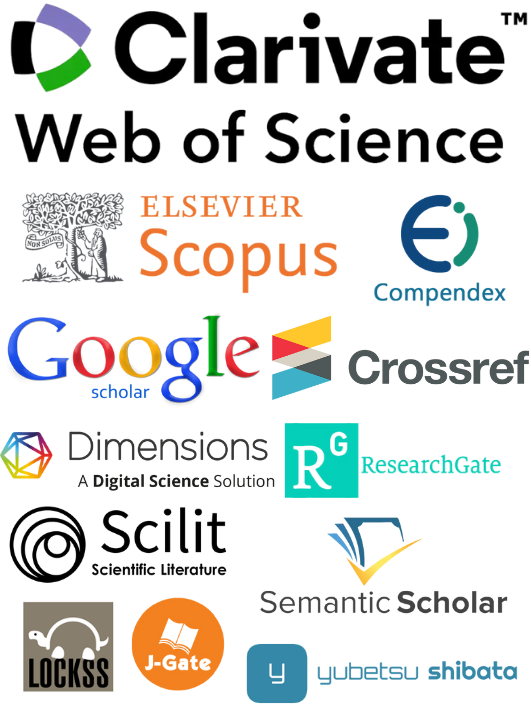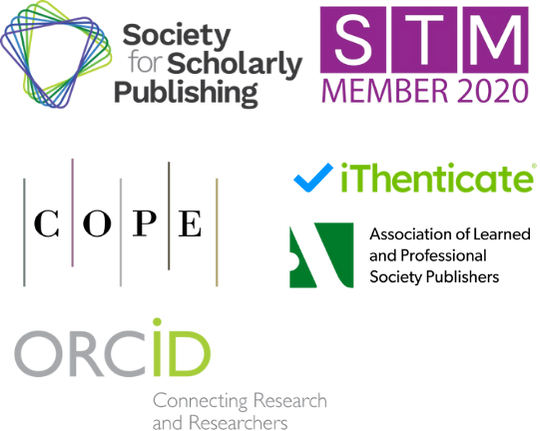AI-Driven Computational Resource Optimization: A Hybrid Deep Reinforcement Learning Framework for Enhancing Large-Scale Model Efficiency
DOI:
https://doi.org/10.71222/ke7c3143Keywords:
computational resource optimization, model hardware scheduling, deep reinforcement learning, large-scale model efficiencyAbstract
This paper presents an AI-driven approach to computational resource optimization aimed at enhancing efficiency and resource utilization in large-scale AI model training and inference processes. As AI models continue to grow exponentially in size, computational resource demands have increased dramatically, with studies indicating that resource utilization efficiency in large model training and deployment typically falls below 60%, resulting in significant cost waste and energy consumption. The proposed framework leverages reinforcement learning and predictive analytics techniques to implement intelligent resource allocation and task scheduling across di-verse hardware environments (GPUs, CPUs, specialized accelerators). The multi-layered architecture incorporates four core components: resource monitoring, workload prediction, adaptive scheduling, and dynamic optimization, capable of adjusting resource configurations dynamically based on workload characteristics and hardware capabilities. Experimental evaluation across 32 large-scale AI training and inference scenarios demonstrated an average 38.7% throughput improvement and 42.3% energy consumption reduction compared to traditional scheduling meth-odds. Field validation through four industry case studies further confirmed the practical value of this approach in financial services, e-commerce, healthcare, and industrial sectors, achieving an average 31.2% increase in resource utilization and 24.8% reduction in operational costs. Economic analysis indicates substantial return on investment (169% average over 6 months) through improved computational efficiency and reduced infrastructure expenses. These research findings have significant strategic implications for enhancing core competitiveness in high-performance computing and AI infrastructure, contributing to reduced dependency on third-party computational resources, accelerated AI innovation cycles, and advancement of green computing initiatives.
References
1. X. Xiao, H. Chen, Y. Zhang, W. Ren, J. Xu, and J. Zhang, “Anomalous payment behavior detection and risk prediction for SMEs based on LSTM-attention mechanism,” Acad. J. Sociol. Manage., vol. 3, no. 2, pp. 43–51, 2025, doi: 10.70393/616a736d.323733.
2. C. Jiang, H. Zhang, and Y. Xi, “Automated game localization quality assessment using deep learning: A case study in error pattern recognition,” J. Adv. Comput. Syst., vol. 4, no. 10, pp. 25–37, 2024, doi: 10.69987/JACS.2024.41003.
3. H. Zhang, X. Jia, and C. Chen, “Deep learning-based real-time data quality assessment and anomaly detection for large-scale distributed data streams,” 2025, doi: 10.54660/IJMBHR.2025.6.1.01-11.
4. Q. Zhao, Y. Chen, and J. Liang, “Attitudes and usage patterns of educators towards large language models: Implications for professional development and classroom innovation,” Academia Nexus J., vol. 3, no. 2, 2024.
5. Y. Liu, Z. Hou, K. Lin, and L. Li, “A deep reinforcement learning approach with heuristic optimization for resource-efficient task offloading in mobile edge computing,” in Proc. 2024 6th Int. Conf. Electronics and Communication, Network and Computer Technology (ECNCT), Jul. 2024, pp. 500–504, doi: 10.1109/ECNCT63103.2024.10704445.
6. Y. Zhang, J. Fan, and B. Dong, “Deep learning-based analysis of social media sentiment impact on cryptocurrency market microstructure,” Acad. J. Sociol. Manage., vol. 3, no. 2, pp. 13–21, 2025, doi: 10.70393/616a736d.323730.
7. Y. Zheng, “Strategies for graph optimization in deep learning compilers,” in Proc. 2024 Int. Conf. Interactive Intelligent Systems and Techniques (IIST), Mar. 2024, pp. 332–337, doi: 10.1109/IIST62526.2024.00086.
8. M. Shu, Z. Wang, and J. Liang, “Early warning indicators for financial market anomalies: A multi-signal integration ap-proach,” J. Adv. Comput. Syst., vol. 4, no. 9, pp. 68–84, 2024, doi: 10.69987/JACS.2024.40907.
9. X. Jia, C. Hu, and G. Jia, “Cross-modal contrastive learning for robust visual representation in dynamic environmental conditions,” Acad. J. Nat. Sci., vol. 2, no. 2, pp. 23–34, 2025, doi: 10.70393/616a6e73.323833.
10. C. Chen, Z. Zhang, and H. Lian, “A low-complexity joint angle estimation algorithm for weather radar echo signals based on modified ESPRIT,” J. Ind. Eng. Appl. Sci., vol. 3, no. 2, pp. 33–43, 2025, doi: 10.70393/6a69656173.323832.
11. H. Zhang, E. Feng, and H. Lian, “A privacy-preserving federated learning framework for healthcare big data analytics in multi-cloud environments,” Spectrum of Research, vol. 4, no. 1, 2024.
12. Z. Ren, Y. Zhou, Y. Chen, et al., “Efficient human pose estimation by maximizing fusion and high-level spatial attention,” in Proc. 2021 16th IEEE Int. Conf. Automatic Face and Gesture Recognition (FG 2021), 2021, pp. 01–06, doi: 10.1109/FG52635.2021.9666981.
13. J. Fan, T. K. Trinh, and H. Zhang, “Deep learning-based transfer pricing anomaly detection and risk alert system for phar-maceutical companies: A data security-oriented approach,” J. Adv. Comput. Syst., vol. 4, no. 2, pp. 1–14, 2024, doi: 10.69987/JACS.2024.40201.
14. J. Chai, C. Jiang, Y. He, and J. Pan, “Design of a cross-diverse hardware computility scheduling platform for diverse com-puting systems,” in Proc. 2024 3rd Int. Conf. Cloud Computing, Big Data Application and Software Engineering (CBASE), Oct. 2024, pp. 891–895, doi: 10.1109/CBASE64041.2024.10824645.
15. G. Rao, T. K. Trinh, Y. Chen, M. Shu, and S. Zheng, “Jump prediction in systemically important financial institutions’ CDS prices,” Spectrum of Research, vol. 4, no. 2, 2024.
16. K. Xu and B. Purkayastha, “Enhancing stock price prediction through attention-BiLSTM and investor sentiment analysis,” Acad. J. Sociol. Manage., vol. 2, no. 6, pp. 14–18, 2024.
17. L. Yan, J. Weng, and D. Ma, “Enhanced transformer-based algorithm for key-frame action recognition in basketball shooting,” 2025, doi: 10.20944/preprints202503.1364.v1.
18. J. Zhang, X. Xiao, W. Ren, and Y. Zhang, “Privacy-preserving feature extraction for medical images based on fully homo-morphic encryption,” J. Adv. Comput. Syst., vol. 4, no. 2, pp. 15–28, 2024.
19. G. Rao, S. Zheng, and L. Guo, “Dynamic reinforcement learning for suspicious fund flow detection: A multi-layer transaction network approach with adaptive strategy optimization,” Appl. Comput. Eng., vol. 145, pp. 1–11, 2025, doi: 10.20944/preprints202504.1440.v1
20. C. Zhang, “An overview of cough sounds analysis,” in Proc. 2017 5th Int. Conf. Frontiers of Manufacturing Science and Measuring Technology (FMSMT), Apr. 2017, pp. 703–709, doi: 10.2991/fmsmt-17.2017.138.
21. X. Jia, H. Zhang, C. Hu, and G. Jia, “Joint enhancement of historical news video quality using modified conditional GANs: A dual-stream approach for video and audio restoration,” Int. J. Comput. Inf. Syst. (IJCIS), vol. 5, no. 1, pp. 79–90, 2024.
22. W. Ren, X. Xiao, J. Xu, H. Chen, Y. Zhang, and J. Zhang, “Trojan virus detection and classification based on graph convo-lutional neural network algorithm,” J. Ind. Eng. Appl. Sci., vol. 3, no. 2, pp. 1–5, 2025, doi: 10.70393/6a69656173.323735.
23. K. Xu and B. Purkayastha, “Integrating artificial intelligence with KMV models for comprehensive credit risk assessment,” Acad. J. Sociol. Manage., vol. 2, no. 6, pp. 19–24, 2024.
24. Z. Wu, Z. Zhang, Q. Zhao, and L. Yan, “Privacy-preserving financial transaction pattern recognition: A differential privacy approach,” Appl. Comput. Eng., vol. 146, pp. 30–40, 2025, doi: 10.20944/preprints202504.1583.v1.
25. W. Wan, L. Guo, K. Qian, and L. Yan, “Privacy-preserving industrial IoT data analysis using federated learning in mul-ti-cloud environments,” Appl. Comput. Eng., vol. 141, pp. 7–16, 2025.
26. J. Fan, H. Lian, and W. Liu, “Privacy-preserving AI analytics in cloud computing: A federated learning approach for cross-organizational data collaboration,” Spectrum of Research, vol. 4, no. 2, 2024.
27. M. Shu, J. Liang, and C. Zhu, “Automated risk factor extraction from unstructured loan documents: An NLP approach to credit default prediction,” Artif. Intell. Mach. Learn. Rev., vol. 5, no. 2, pp. 10–24, 2024.
28. D. Zhang and E. Feng, “Quantitative assessment of regional carbon neutrality policy synergies based on deep learning,” J. Adv. Comput. Syst., vol. 4, no. 10, pp. 38–54, 2024, doi: 10.69987/JACS.2024.41004.
29. X. Xiao, Y. Zhang, H. Chen, W. Ren, J. Zhang, and J. Xu, “A differential privacy-based mechanism for preventing data leakage in large language model training,” Acad. J. Sociol. Manage., vol. 3, no. 2, pp. 33–42, 2025, doi: 10.70393/616a736d.323732.
30. Y. Liu, W. Bi, and J. Fan, “Semantic network analysis of financial regulatory documents: Extracting early risk warning signals,” Acad. J. Sociol. Manage., vol. 3, no. 2, pp. 22–32, 2025, doi: 10.70393/616a736d.323731.
31. C. Wang, R. Guo, P. Xiu, X. Li, and H. Wang, “Research on resource scheduling algorithm optimization in cloud computing environment based on deep learning,” in Proc. 2024 4th Int. Conf. Electronic Information Engineering and Computer Communica-tion (EIECC), Dec. 2024, pp. 918–922, doi: 10.1109/EIECC64539.2024.10929098.
32. H. Gao, Y. Tian, R. Yao, F. Xu, X. Fu, and S. Zhong, “Exploiting adversarial examples to drain computational resources on mobile deep learning systems,” in Proc. 2020 IEEE/ACM Symp. Edge Computing (SEC), Nov. 2020, pp. 334–339, doi: 10.1109/SEC50012.2020.00048.
Downloads
Published
Issue
Section
License
Copyright (c) 2025 Xiaoying Li (Author)

This work is licensed under a Creative Commons Attribution 4.0 International License.



